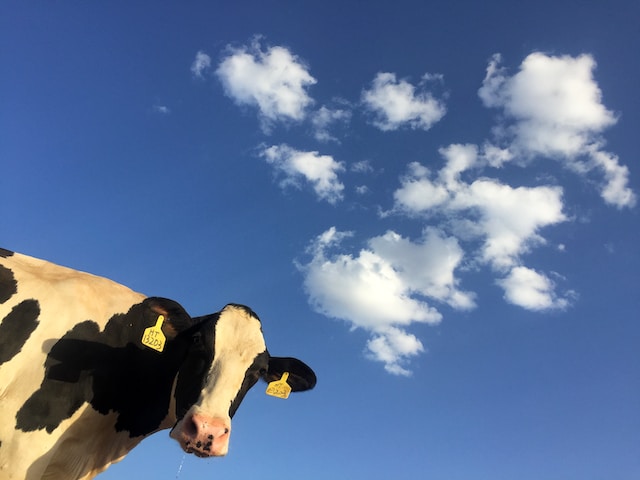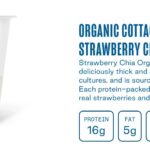A Meaty Idea: ButcherBox Proves You Don’t Need to Take Outside Money
Mike Salguero never took a nickel from the outside venture or private equity firms. Yet, his $600 million grass-fed meat subscription box company was profitable from Box One.
As a child raised without a father, Mike was influenced by his Uncle Steve, an entrepreneur. Steve brought microwaveable popcorn to Spain. Mike always thought creating something out of nothing was inspiring, and he saw a path to his future.
By age ten, he considered being an entrepreneur and a boss. He never liked being told what to do.
At age 26, in an initial startup called Custom Made, he raised $30MM and lost all of it.
He had five rounds of financing.
Besides losing the money, he lost the culture, his job, and the ability to create his vision.
His biggest lesson: he didn’t care how small the business was and wanted to control his journey.
I know the feeling. My wife and I never took outside equity to grow our wholesale bakery business in the 1970s and 1980s.
Was Venture Capital the Reason for Failure?
Incentives at his first company, Custom Made, weren’t aligned.
The VCs wanted something that wasn’t working. They didn’t want him to pivot when it became clear the business wasn’t working; their stake (and voice) was more significant than his.
But he knew the business was in trouble, but the VC folks didn’t want to change direction.
He lost control as the ship sank. The VC took over. He had no way to move forward.
At age 34, he was forced out.
When he started ButcherBox, he vowed never to take venture money.
ButcherBox – Act Two
He started ButcherBox and promised he wouldn’t raise money. He believed that with $10K, he could make this venture work. He thought that there was a lie about entrepreneurship about raising money.
You can build a business without raising money, especially if you care more about bootstrapping than growth. He wasn’t trying to become a giant – just big enough to sustain the brand. He hypothesized that he could make this work if he got 1,000 subscribers and made $20 per box. That was his working thesis, and he followed this strategy.
The service is a monthly box of grass-fed beef delivered to your doorstep.
At the time, grass-fed beef was hard to find, and he found plenty of people with the same need. Bringing grass-fed meat to more people was the problem to be solved.
He found someone from Omaha Steaks who helped them figure out an approach and sourcing. Mike started with Kickstarter – preselling the product.
Inventory is the death of a business like this, so Mike wanted pre-orders, and then he would buy inventory and get customers on a subscription.
He knew he could grow without financing if he hit his numbers.
He raised $215K in presale orders to 1,000 households. After they received their order, he called everyone, and 40% signed up for subscriptions.
He was halfway to his goal in six weeks.
Meat Marketing
ButcherBox launched a website.
And they started reaching out to anyone who wrote about grass-fed beef.
One paleo doctor, Chris Kressser, tweeted about them. And that started to bring in new subscribers. So, they worked with him and others in the paleo, keto, and Whole 30 diets. In perpetuity, they offered them a residual $15/month for every customer who subscribes. This influencer marketing strategy paid off.
Box 1 Profitable
They had to be profitable on the first box sold. And they did that by selling a package at $129 and making $25 per box. They could afford to pay $10 to the referrer and keep $15.
At this time, subscription food companies were growing in 2015.
When Blue Apron had a $2B valuation in the meal kit space, there were 150 look-alikes to their business model.
ButcherBox took the essential part of the meal kit – the protein and focused on the center of the plate.
Mike did come close to raising money twice with a venture bank and a VC firm – and something felt wrong. He couldn’t sign the term sheet, and he walked away. And he is glad he did.
Blue Apron went public in the summer of 2017 but lost 90% of its value. VC money dried up. If they had raised money, no one would have funded them. Mike believed the business had to be profitable to grow.
The Mission Needed Breathing Room
ButcherBox sells meat raised better.
Some companies buy cheaper meat or cut corners, and they stick to their priority for quality. They could do things others couldn’t do because of their long-term view. And they didn’t have investors watching every long-term decision they made.
Mike knows VC makes sense for some industries -Ai, space travel, etc. And beyond the money, the advice can help connect you with resources and networks.
But Mike believed that raising money wasn’t the only way to do it. If you think about shows like Shark Tank – you see young businesses selling a bunch of your company for money.
Where is entrepreneurship? Tech Crunch writes about raising money in almost every article.
But Mike wanted to build his business slowly.
His company now has $600MM in revenue seven years later. That is remarkable growth for a bootstrapped venture.
That kind of growth came quickly from their early influencer marketing strategy. Then, he invested in paid social media advertising to gain customers. They focused on FB videos. His CAC came down dramatically.
“We had to be Box 2 and Box 3 profitable.”
Mike Salguero, CEO ButcherBox
The secret was to think differently. He used 30-day terms with FB and then paid with a credit card to build another 30 days of float. He conserved cash for the payback period to keep profitability high.
His new marketing approach allowed them to be successful. But they were focused on driving costs out of the box, like getting better deals out of the cardboard and every place they could save money but maintain the customer’s experience.
Then Covid Came
Mike had a friend from China stuck in the U.S. in January 2020. She told him the factories shut down in China. So, he felt Covid was coming to the U.S., and he stocked up on inventory.
Factories didn’t shut down because of the importance of food, but his quick decision to bring in inventory helped in the early days.
When Covid hit in March of 2020, he didn’t imagine the surge in demand. He had to shut off all marketing and had tens of thousands of signs up per week. One week alone, he had 60,000 new subscribers!
Everyone was at home, and people saw the meat shelves empty.
And existing members wanted boxes faster.
So, he had to maintain the meat for members and stop taking in new customers.
This loyalty paid off over time. He kept products for his members.
They would have had to keep growing if they had been funded differently. Member obsession was a key value to the company, and they decided to take care of members first.
CAC was zero because we shut off all marketing, but demand was through the roof.
His view of capitalism is caring for employees, the environment, and customers. Shareholder value alone isn’t going to sustain capitalism.
People care about the brands they are consuming and what they stand for. Consumers want their dollar to align with their value. And especially Millennials and Gen X care about the mission.
Initially, ButcherBox’s mission was transforming meat.
But they want to transform how companies can be built. Top-line revenue, screwing employees isn’t necessary. Mike has always been a visionary entrepreneur finding a different way to slice the bacon.
That is pretty meaty advice.
Here are five companies with $500 million in revenue who never took VC or PE money:
- The Honest Company. Founded in 2012 by Jessica Alba, The Honest Company is a natural and organic baby and beauty products company. The company has never taken VC or PE money and has grown into a $500 million business.
- Everlane. Founded in 2011 by Michael Preysman, Everlane is a clothing company that sells high-quality, ethically-made clothing. The company has never taken VC or PE money and has grown into a $500 million business.
- Warby Parker. Founded in 2010 by Neil Blumenthal, Dave Gilboa, Andrew Hunt, and Jeffrey Raider, Warby Parker is an online eyewear company that sells prescription glasses and sunglasses. The company has never taken VC or PE money and has grown into a $500 million business.
- Casper. Founded in 2014 by Philip Krim, Neil Parikh, and T.J. Parker, Casper is a mattress company that sells mattresses online. The company has never taken VC or PE money and has grown into a $500 million business.
- Allbirds. Founded in 2016 by Tim Brown and Joey Zwillinger, Allbirds is a footwear company that sells wool sneakers. The company has never taken VC or PE money and has grown into a $500 million business.
These are just a few examples of companies that have succeeded without taking VC or PE money. These companies show that it is possible to build a successful business without relying on outside investment.
You can set up a time to chat with me about your marketing challenges using my calendar. Email me jeffslater@themarketingsage.com Call me. 919 720 0995. The conversation is free, and we can explore if working together makes sense. Watch a short video about working with me.
Photo by Ryan Song on Unsplash
Based on an interview from HBR Idea Cast





